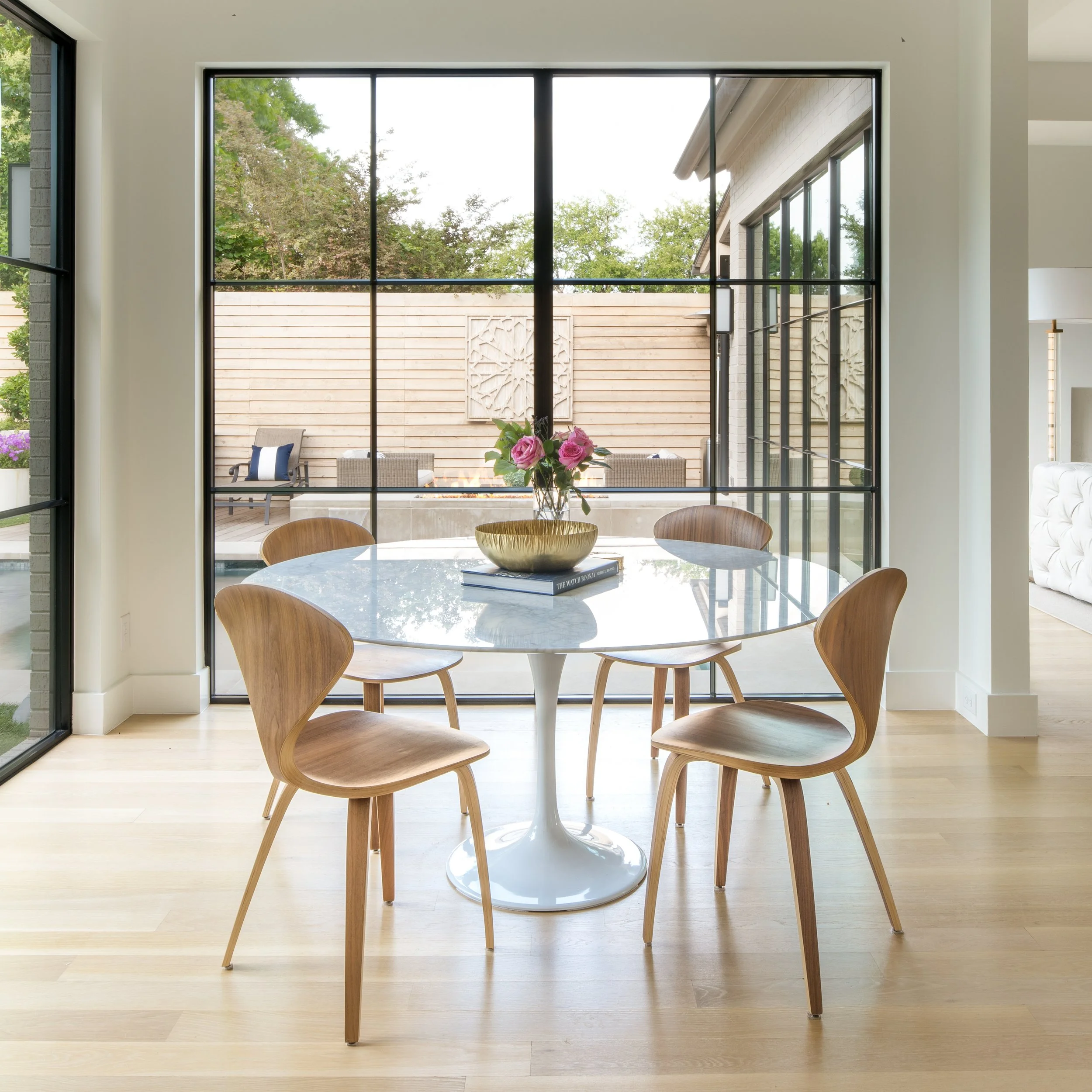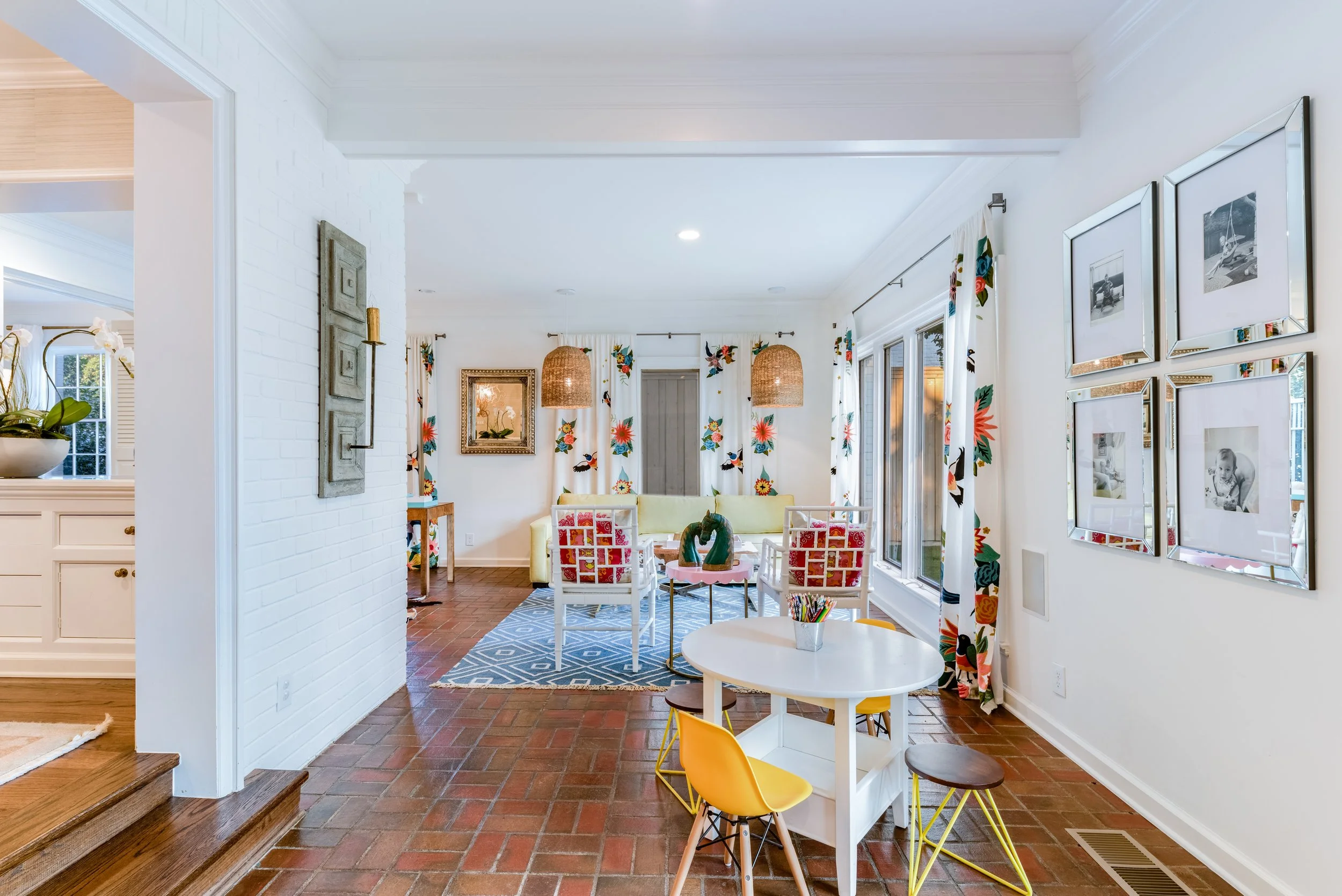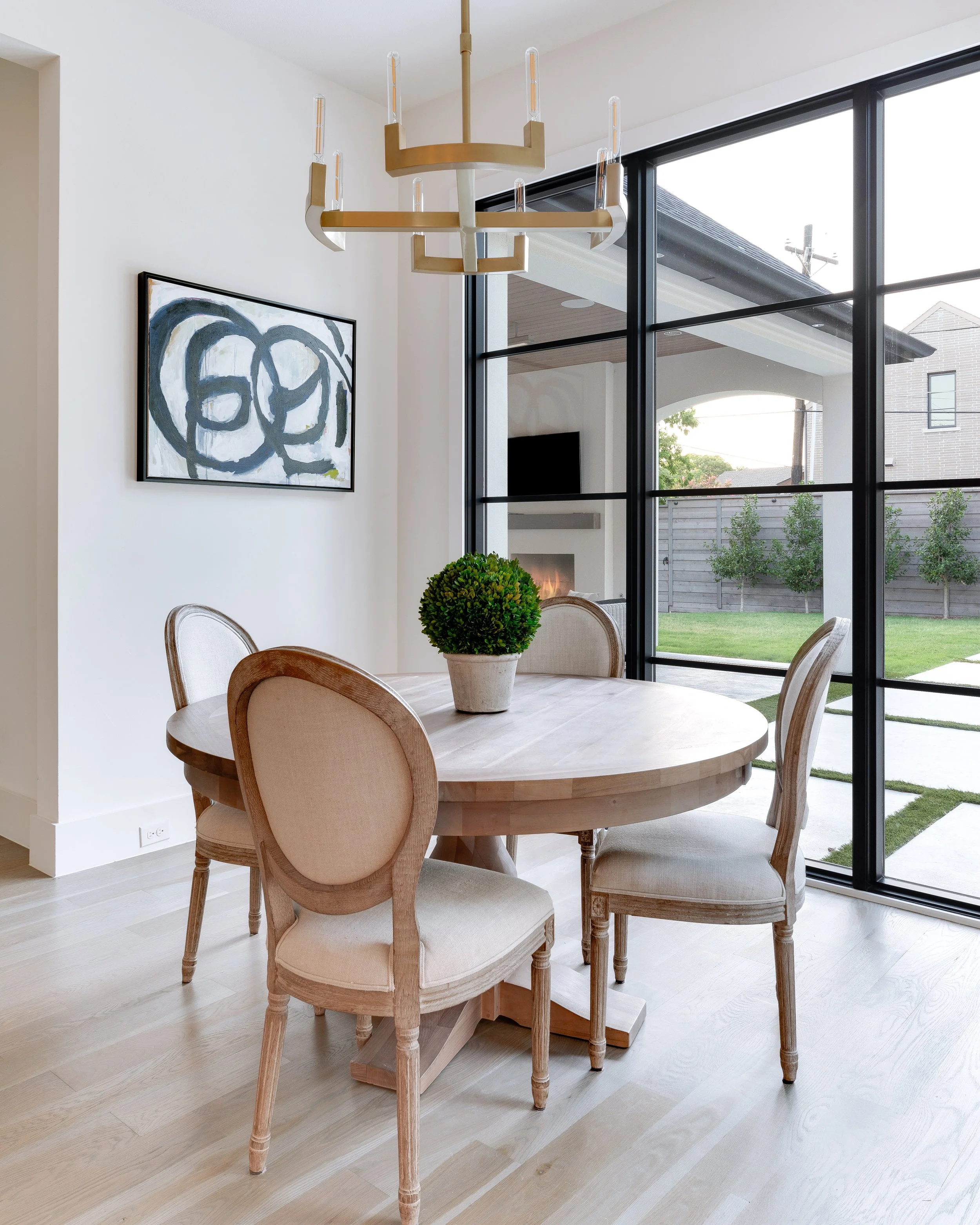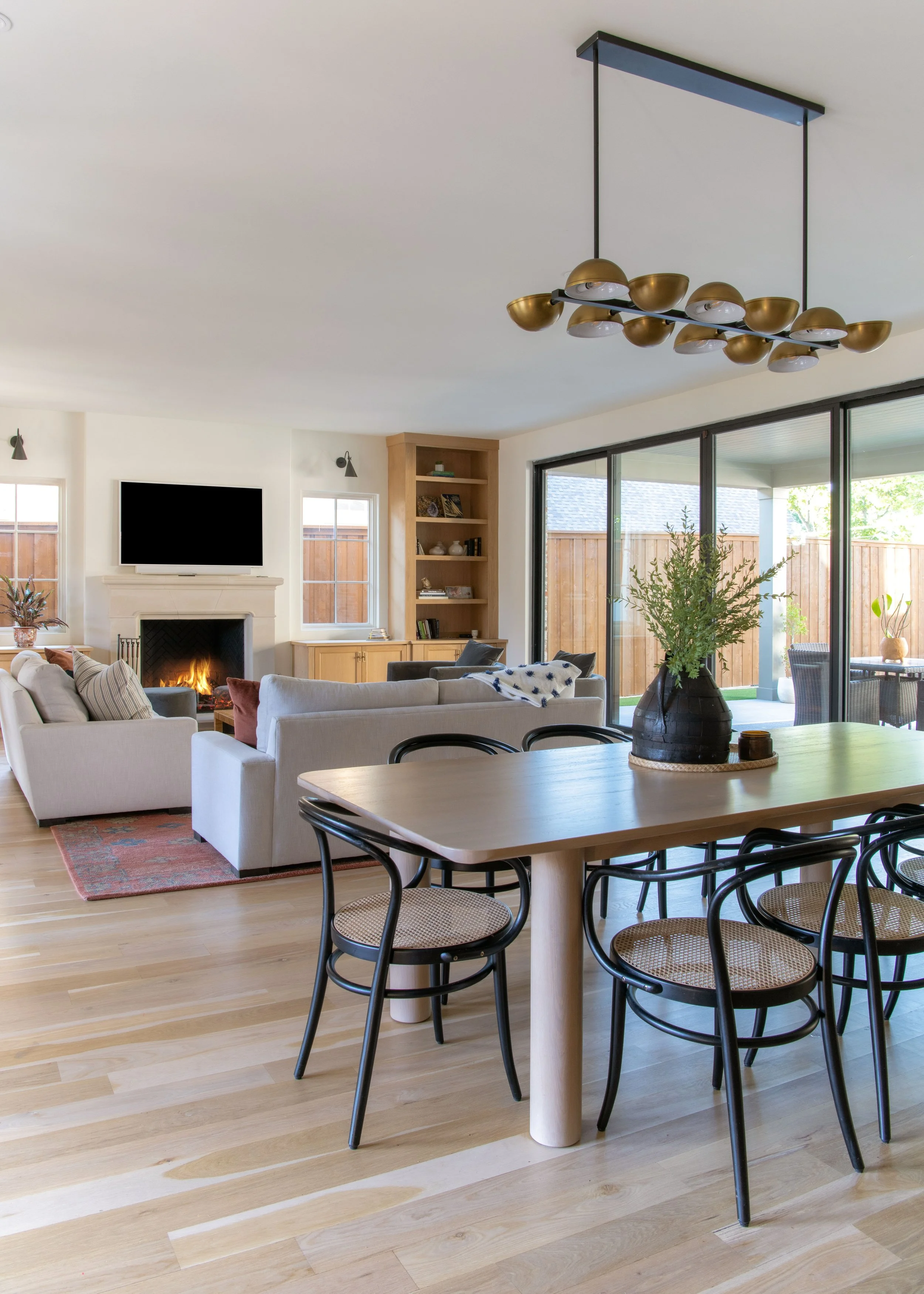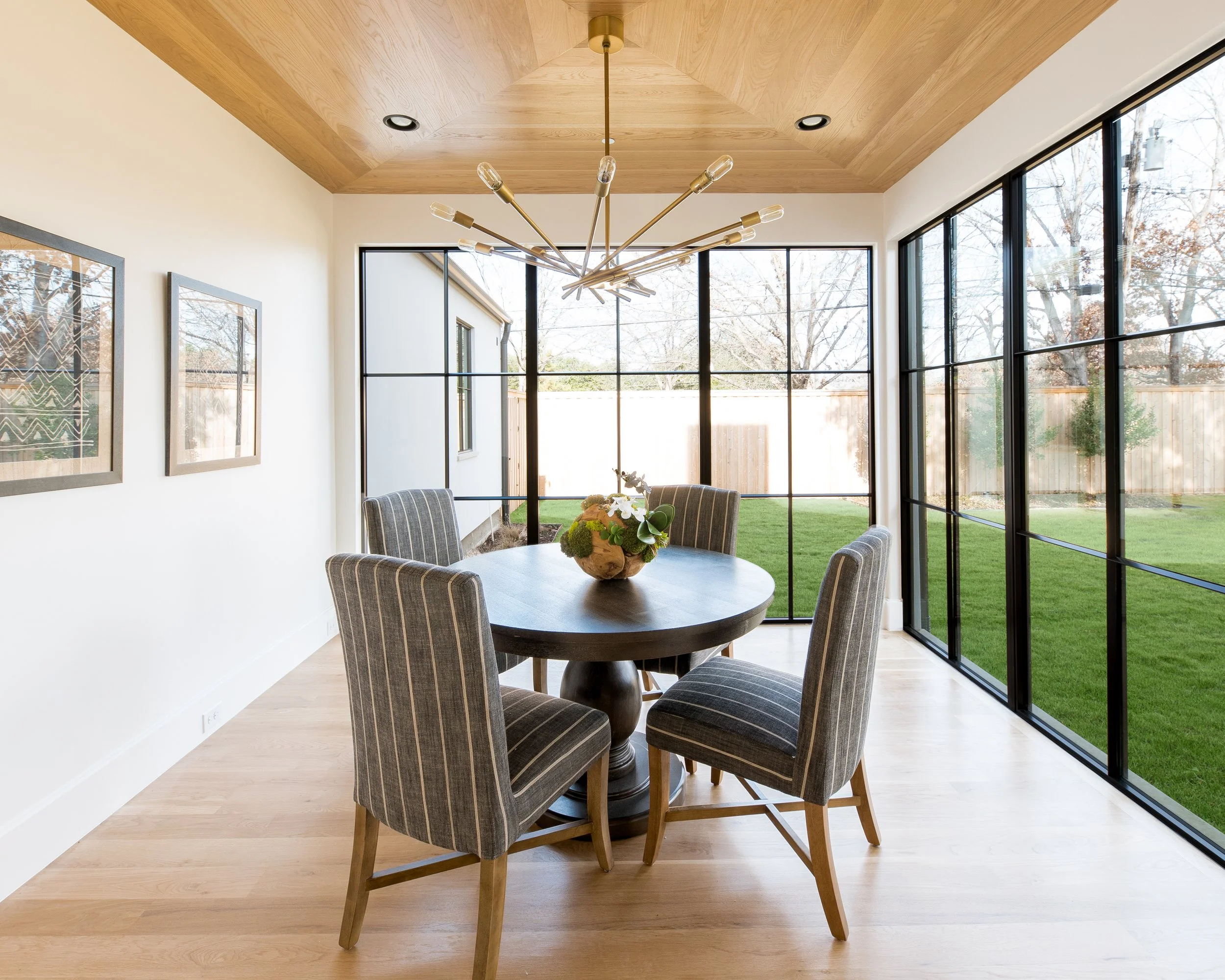Breakfast Rooms
A breakfast room is a fairly modern addition to a home that evolved with the modern casual lifestyle. Before the 1900s, most homes only had formal dining rooms in which all meals would be served. In the 20th century, as the middle-class grew and became homeowners, smaller, less formal dining rooms became the trend. Leaning into the 2000s, open concept homes became the norm, dining areas became very visible, and homeowners began to favor these smaller, hidden spaces.
But why did this shift happen? What made the breakfast room the preferred option?
1. Convenience & Efficiency
Ideal for quick meals, such as breakfast or snacks, without setting up a formal dining space.
2. Encourages Daily Use
Unlike formal dining rooms, a breakfast room is more likely to be used daily, making it a better return on space.
Promotes family interaction during morning routines or casual dinners.
3. Better Use of Natural Light
Breakfast rooms are often placed near windows or in sunrooms, maximizing daylight and creating a cheerful start to the day.
Some common features found in breakfast rooms include floor-to-ceiling windows, corner units, faux corner units, or windows that extend from built-in seating to the ceiling. These windows allow natural light in, eliminating the need for artificial lighting, which helps elevate mood and energy. Another benefit is that opening up these small spaces creates the illusion of a larger room, while also offering beautiful views of a home’s backyard, garden, or pool area.
Breakfast rooms are meant to be functional and cozy. Their bright characteristics and intimate layouts make them one of the brightest rooms/areas of a home. They make a great addition to your residence and are the place to make a house become a home.


